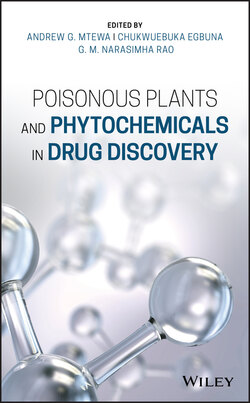Читать книгу Poisonous Plants and Phytochemicals in Drug Discovery - Группа авторов - Страница 18
1.3.2 Trial by Ordeal
ОглавлениеTrial by ordeal is a judicial practice by which the guilt or innocence of the accused is determined by subjecting them to an unpleasant – usually dangerous – experience. In some cases, the accused were considered innocent only if they survived the test, or if their injuries healed [9, 31]. Ordeal by poison is peculiar to Africa [31, 32].
There was a substantial variation in the way ordeal poisons were prepared and dispensed across Africa but the basic procedures were similar. The procedure involved a suspect being given some of the poison to eat or drink, depending on the form in which it was prepared or presented. If the suspect vomited the poison, an indication that the subject’s stomach had rejected it, they would be ruled innocent. However, if their system retained the poison, they would be judged guilty and left to die from the effects of the poison [31, 33].
Most of the ordeal poisons were from the Loganiaceae, Apocynaceae, Leguminosae, and Solanaceae families. Other families with one or fewer representatives of ordeal poisons are Combretaceae, Sapotaceae, Euphorbiaceae, Polygalaceae, and Asclepiadaceae. In most cases, poisons were referred to by a local tribal name, which was mainly a general reference to the ordeal. This rendered the classification of ordeal poisons by tribe practically impossible [33]. The medicine men highly guarded their trade secrets, often making it impossible to identify the plant or formula used [3, 33]. Two of the well‐documented cases are of ordeal poisons with Physostigma venenosum and Tanghinia venenifera.
The Efik‐speaking chiefs of Nigeria used the toxic Calabar bean (P. venenosum Balf.; family Leguminosae). P. venenosum was used in the trial of people accused of witchcraft, sorcery, or murder. Medicine men were used to determine the effective dose of portions administered to the accused. It was believed that the poison would kill only the guilty and spare the innocent. This trial by ordeal was effective because of the toxic nature of the alkaloids contained in P. venenosum. When ingested hesitantly or slowly, as expected of a guilty person, the alkaloids had more time to be absorbed into the bloodstream, leading to death shortly after ingestion. When given to innocent people, they would quickly gulp it, resulting in emesis. In other words, the drug would quickly be vomited before exerting any lethal effects [31, 34, 35].
In Madagascar, a prominent example was the widely used ordeal plant tangena (T. venenifera Poir, synonym of Cerbera manghas (L). from the family Apocynaceae). All parts of T. venenifera are toxic, but the nuts that were used against those accused of various crimes, especially witchcraft – are the most toxic and contain the cardiac glycoside tanghin [32, 33]. T. venenifera use often resulted in a very high number of fatalities, with as many as 6000 people reported dead in one incident [33]. The suspect was made to eat a little rice and swallow three small pieces of fowl’s skin followed by the tangena emulsion. After a few minutes, large quantities of tepid water were given, resulting in long and continued violent vomiting. If the three pieces of skin were expelled, the victim was exonerated, as a rule, and left to be nursed by their friends. T. venenifera has not been pursued for the possible development of any modern drug.
Other plant species used as ordeal poisons across Africa include Strychnos icaja Baillon, whose roots are widely used in ordeal poisons in West and Central Africa [36].
Menabea venenata Baill. (family Asclepiadaceae) was used in a similar manner to T. venenifera, but was dwarfed by its power. It was used exclusively as an ordeal poison by the Sakalave tribe in the arid regions of the west and northwest of Madagascar. M. venenata also contains a powerful cardiac glycoside [33].
Erythrophleum couminga Baill. (family Leguminosae) was also used as an ordeal plant poison. The bark of E. couminga is a highly toxic bark and was used as an accessory poison in ordeal trials throughout Madagascar and the Seychelles [33].
